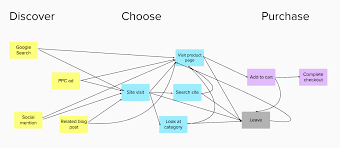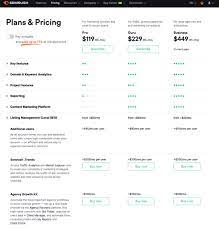Conversion Rate Optimization: Unlocking the Potential of Your Online Business
In today’s highly competitive digital landscape, it’s not enough for businesses to simply have an online presence. The key to success lies in converting website visitors into paying customers. This is where Conversion Rate Optimization (CRO) comes into play.
Conversion Rate Optimization is the process of fine-tuning your website or landing page to maximize the percentage of visitors who take a desired action, such as making a purchase, signing up for a newsletter, or filling out a contact form. By optimizing your conversion rate, you can significantly increase your return on investment (ROI) and drive sustainable growth for your business.
So, how does CRO work? It involves analyzing user behavior, identifying pain points and barriers to conversion, and implementing strategic changes to improve the overall user experience. Here are some essential steps to get started with CRO:
- Understand Your Audience: The first step in any successful CRO strategy is understanding your target audience. Analyze their demographics, interests, and behaviors to gain insights into what motivates them to convert. This information will help you tailor your messaging and design elements accordingly.
- Set Clear Goals: Define clear and measurable goals for your website or landing page. Whether it’s increasing sales, generating leads, or boosting engagement, having specific targets will guide your optimization efforts.
- Analyze User Behavior: Utilize web analytics tools like Google Analytics to track user behavior on your site. Identify pages with high bounce rates or low conversion rates and pinpoint areas where users may be dropping off in the conversion funnel.
- Conduct A/B Testing: A/B testing involves creating two versions of a webpage with slight variations and directing equal traffic to each version. By comparing their performance metrics (such as click-through rates or conversions), you can determine which version resonates better with your audience and make data-driven decisions.
- Optimize Landing Pages: Landing pages play a crucial role in CRO. Ensure that your landing pages are visually appealing, easy to navigate, and have compelling calls-to-action. Test different headlines, images, colors, and button placements to find the optimal combination that drives conversions.
- Simplify the Conversion Process: Make it as easy as possible for users to convert. Streamline your checkout process, reduce form fields, and minimize distractions that could divert their attention away from the conversion goal.
- Personalize User Experience: Tailor your messaging and offers based on user preferences or previous interactions. Personalization creates a more engaging experience and increases the likelihood of conversion.
- Continuously Monitor and Iterate: CRO is an ongoing process. Regularly monitor your website’s performance, analyze user feedback, and make iterative improvements based on data-driven insights.
By implementing these CRO strategies, businesses can unlock the full potential of their online presence. Not only does it lead to increased conversions and revenue, but it also enhances user satisfaction and builds long-term customer loyalty.
Remember, every visitor represents an opportunity for conversion. By optimizing your website or landing page through Conversion Rate Optimization techniques, you can turn those opportunities into tangible results for your business. Stay proactive, keep experimenting, and watch as your conversion rates soar to new heights!
8 Frequently Asked Questions About Conversion Rate Optimization (CRO)
- What is conversion rate optimization (CRO)?
- How can I improve my website’s conversion rate?
- What are the best practices for CRO?
- How do I measure the success of my CRO efforts?
- What are the most important elements of a successful CRO strategy?
- How do I use A/B testing to optimize conversions?
- How does user experience affect conversion rates?
- What tools should I use for CRO analysis and optimization?
What is conversion rate optimization (CRO)?
Conversion Rate Optimization (CRO) is the practice of improving the percentage of website visitors who take a desired action, such as making a purchase, filling out a form, or subscribing to a newsletter. CRO involves analyzing user behavior, identifying barriers to conversion, and implementing strategic changes to optimize the overall user experience and increase the likelihood of conversions.
The goal of CRO is to maximize the return on investment (ROI) from existing website traffic by converting more visitors into customers or leads. Rather than focusing solely on driving more traffic to a website, CRO focuses on optimizing the existing traffic by improving conversion rates.
CRO involves various techniques and strategies such as analyzing website analytics data, conducting A/B testing, optimizing landing pages and calls-to-action, simplifying the conversion process, personalizing user experiences, and continuously monitoring and iterating based on data-driven insights.
By implementing CRO strategies, businesses can improve their online performance and achieve higher conversion rates. This leads to increased revenue, improved customer satisfaction, enhanced user engagement, and long-term business growth. CRO is an ongoing process that requires continuous analysis, experimentation, and optimization to maximize conversions and achieve business objectives.
How can I improve my website’s conversion rate?
Improving your website’s conversion rate requires a strategic approach and continuous optimization efforts. Here are some key steps you can take to enhance your website’s conversion rate:
- Understand Your Audience: Gain a deep understanding of your target audience, their needs, preferences, and pain points. Conduct market research, analyze customer data, and create buyer personas to tailor your messaging and design elements accordingly.
- Clear Call-to-Action (CTA): Make sure your website has clear and compelling CTAs that guide visitors towards the desired action. Use action-oriented language, place CTAs prominently on your pages, and ensure they are visually distinct from other elements on the page.
- Streamline Navigation: Simplify your website’s navigation to make it easy for visitors to find what they’re looking for. A clear and intuitive navigation structure reduces friction and helps users move smoothly through the conversion funnel.
- Optimize Page Load Speed: Slow-loading pages can significantly impact conversions. Optimize your website’s speed by minimizing image sizes, leveraging browser caching, and using content delivery networks (CDNs). A fast-loading website improves user experience and reduces bounce rates.
- Mobile Responsiveness: With the increasing use of mobile devices, it is crucial to have a responsive website that adapts seamlessly to different screen sizes. Ensure that your website is mobile-friendly to provide an optimal experience for mobile users.
- Compelling Content: Create high-quality content that resonates with your target audience. Use persuasive copywriting techniques to highlight the benefits of your products or services, address customer pain points, and build trust with your audience.
- Social Proof: Incorporate social proof elements such as customer testimonials, reviews, case studies, or trust badges on your website. Social proof helps build credibility and trust with potential customers, increasing their likelihood of converting.
- A/B Testing: Conduct A/B testing by creating multiple versions of webpages with slight variations and directing equal traffic to each version. Compare their performance metrics (such as conversion rates) to identify the most effective design, layout, messaging, or CTA placement.
- Optimize Forms: If your website includes forms for lead generation or purchases, optimize them to minimize friction. Reduce the number of form fields, use autofill options where possible, and clearly communicate the benefits of completing the form.
- Analyze User Behavior: Utilize web analytics tools to track user behavior on your website. Identify pages with high bounce rates or low conversion rates and identify areas for improvement. Heatmaps and session recordings can provide insights into how users interact with your site.
- Personalization: Leverage personalization techniques to deliver tailored experiences to your visitors. Use data such as browsing history or previous interactions to customize content, recommendations, or offers based on individual preferences.
- Continuous Optimization: CRO is an ongoing process. Continuously monitor your website’s performance, analyze user feedback, and make iterative improvements based on data-driven insights. Regularly test new ideas and strategies to optimize conversions further.
By implementing these strategies and continuously optimizing your website’s conversion rate, you can enhance user experience, increase engagement, and drive more conversions for your business. Remember that each website is unique, so it’s important to experiment and find what works best for your specific audience and industry.
What are the best practices for CRO?
When it comes to Conversion Rate Optimization (CRO), implementing best practices can significantly improve your chances of success. Here are some key practices to consider:
- Conduct Thorough Research: Start by understanding your target audience, their needs, motivations, and pain points. Utilize tools like surveys, user testing, and heatmaps to gather insights into user behavior on your website.
- Set Clear Goals: Define specific, measurable goals for your CRO efforts. Whether it’s increasing sales, generating leads, or improving engagement metrics, having clear objectives will help you focus your optimization strategies.
- Analyze User Data: Utilize web analytics tools to analyze user behavior on your website. Identify key performance indicators (KPIs) such as bounce rates, click-through rates, and conversion rates to identify areas that need improvement.
- Implement A/B Testing: A/B testing is a fundamental practice in CRO. Test different variations of elements such as headlines, call-to-action buttons, layouts, or colors to determine which version performs better in terms of conversions.
- Optimize Landing Pages: Landing pages are critical for conversions. Ensure they have clear messaging, compelling visuals, and a strong call-to-action that aligns with the user’s intent.
- Simplify Conversion Process: Make the conversion process as seamless as possible for users by minimizing form fields and reducing friction points during checkout or sign-up processes.
- Improve Page Load Speed: Slow-loading pages can significantly impact conversion rates. Optimize your website’s performance by compressing images, minifying code, and leveraging caching techniques.
- Enhance Mobile Experience: With the rise in mobile usage, optimizing your website for mobile devices is crucial for CRO success. Ensure responsive design and mobile-friendly features to provide a seamless experience across all devices.
- Leverage Social Proof: Incorporate social proof elements such as customer reviews, testimonials, or trust badges to build credibility and trust with your audience.
- Use Compelling Call-to-Actions: Create clear, persuasive, and action-oriented call-to-action (CTA) buttons that stand out on the page. Use strong verbs and create a sense of urgency to encourage users to take the desired action.
- Personalize User Experience: Tailor your content and offers based on user preferences or previous interactions. Personalization can significantly improve engagement and conversion rates.
- Continuously Test and Iterate: CRO is an ongoing process. Continuously monitor performance metrics, gather user feedback, and iterate your strategies based on data-driven insights.
Remember, CRO is a combination of art and science. While these best practices provide a solid foundation, it’s essential to adapt them to your specific business needs and continuously experiment to find what works best for your target audience.
How do I measure the success of my CRO efforts?
Measuring the success of your Conversion Rate Optimization (CRO) efforts is crucial to understanding the impact of your optimizations and making informed decisions for further improvements. Here are some key metrics you can use to measure the effectiveness of your CRO efforts:
- Conversion Rate: This is the most fundamental metric in CRO. It measures the percentage of visitors who complete a desired action, such as making a purchase or filling out a form. By tracking your conversion rate over time, you can assess whether your optimizations are positively impacting user behavior.
- Bounce Rate: Bounce rate refers to the percentage of visitors who leave your website after viewing only one page. A high bounce rate may indicate that visitors are not finding what they’re looking for or encountering barriers to conversion. Lowering your bounce rate through CRO indicates that visitors are engaged and more likely to convert.
- Average Session Duration: This metric measures the average time visitors spend on your website per session. A longer average session duration suggests that users find value in your content and are more likely to engage with your offerings, increasing the chances of conversion.
- Click-through Rate (CTR): CTR measures the percentage of users who click on a specific element, such as a call-to-action button or a promotional banner. By monitoring CTR, you can determine if certain elements are effectively capturing user attention and driving engagement.
- Revenue per Visitor (RPV): RPV calculates the average revenue generated per visitor on your website. It provides insights into how effectively you’re monetizing traffic and helps evaluate the impact of CRO efforts on revenue generation.
- Funnel Drop-off Rates: Analyzing drop-off rates at different stages of your conversion funnel allows you to identify areas where users may be encountering obstacles or losing interest. By optimizing these stages through targeted improvements, you can reduce drop-offs and increase overall conversions.
- Return on Investment (ROI): ROI measures the profitability of your CRO efforts by comparing the revenue generated against the cost of implementing optimizations. Calculating ROI helps you understand the financial impact of your CRO initiatives and determine if they are delivering a positive return.
Remember that measuring success in CRO is an ongoing process. Continuously monitor these metrics, set benchmarks, and compare results before and after implementing optimizations to gauge their effectiveness. Additionally, consider qualitative feedback from users through surveys or user testing to gain deeper insights into their experiences and identify areas for further improvement.
By regularly assessing these metrics, you can track progress, identify areas of success, uncover opportunities for optimization, and make data-driven decisions to continuously enhance your CRO efforts.
What are the most important elements of a successful CRO strategy?
A successful Conversion Rate Optimization (CRO) strategy involves several key elements that work together to maximize conversions and improve overall business performance. Here are some of the most important elements to consider:
- Data Analysis: A data-driven approach is crucial for effective CRO. Analyze user behavior, conversion funnels, and key performance indicators (KPIs) to identify areas of improvement and prioritize optimization efforts.
- Clear Goals: Clearly define your conversion goals and objectives. Whether it’s increasing sales, generating leads, or improving engagement, having specific targets helps guide your optimization strategy.
- User Research: Understand your target audience by conducting thorough user research. Gather insights into their needs, preferences, pain points, and motivations to tailor your messaging and design elements accordingly.
- A/B Testing: A/B testing involves creating two versions of a webpage with slight variations and directing equal traffic to each version. By comparing the performance metrics of each variant, you can determine which changes have a positive impact on conversions.
- Landing Page Optimization: Optimize your landing pages to ensure they are visually appealing, easy to navigate, and have clear calls-to-action (CTAs). Test different elements like headlines, images, colors, button placements, and form fields to find the most effective combination.
- Simplified Conversion Process: Make it as easy as possible for users to convert by streamlining the conversion process. Minimize distractions, reduce form fields or steps in the checkout process, and provide clear instructions throughout the journey.
- Personalization: Tailor the user experience based on individual preferences or previous interactions. Use personalization techniques like dynamic content or personalized recommendations to create a more engaging experience that resonates with users.
- Mobile Optimization: With an increasing number of users accessing websites on mobile devices, it’s crucial to optimize for mobile responsiveness and usability. Ensure that your website is mobile-friendly and provides a seamless experience across different devices.
- Continuous Improvement: CRO is an iterative process. Continuously monitor performance, analyze user feedback, and make data-driven improvements based on insights. Regularly test and refine your optimization strategies to stay ahead of evolving user preferences.
- Collaboration and Communication: Foster collaboration between different teams involved in the CRO process, such as marketing, design, development, and analytics. Effective communication ensures that everyone is aligned with the goals and strategies, leading to a more cohesive and successful CRO strategy.
By incorporating these elements into your CRO strategy, you can optimize your website or landing pages to drive higher conversions, improve user experience, and ultimately achieve your business objectives.
How do I use A/B testing to optimize conversions?
A/B testing is a powerful technique that allows you to compare two versions of a webpage or element to determine which one performs better in terms of conversions. Here’s how you can effectively use A/B testing to optimize conversions:
- Identify the Element to Test: Start by selecting the specific element you want to test. It could be a headline, call-to-action button, layout, color scheme, or any other element that directly impacts conversions.
- Define Your Hypothesis: Formulate a hypothesis about how changing the selected element will impact conversions. For example, you might hypothesize that changing the color of your call-to-action button from blue to red will increase click-through rates.
- Create Two Versions: Develop two versions of your webpage or element – the original (A) and the variant (B). Keep everything else constant except for the specific element you are testing.
- Split Traffic Evenly: Use an A/B testing tool to split your website traffic evenly between the original and variant versions. This ensures that both versions have an equal opportunity to perform.
- Set Conversion Goals: Clearly define what constitutes a conversion for your test. It could be a completed purchase, form submission, newsletter sign-up, or any other action that aligns with your business objectives.
- Run the Test: Allow sufficient time for your test to run and gather enough data for statistical significance. The duration of the test depends on factors like website traffic volume and conversion rate variability.
- Analyze Results: Once the test is complete, analyze the results using statistical analysis tools provided by your A/B testing platform. Look at metrics such as conversion rates, click-through rates, bounce rates, and engagement metrics to determine which version performed better.
- Draw Conclusions: Based on the data collected during A/B testing, evaluate whether there was a significant difference in performance between the original and variant versions. Determine if your hypothesis was supported or refuted.
- Implement the Winning Version: If the variant version (B) outperforms the original (A), implement the changes permanently on your website. If not, go back to the drawing board and develop new hypotheses to test.
- Continue Iterating: A/B testing is an iterative process. Use the insights gained from each test to inform future tests and optimizations. Constantly refine and improve your website or elements based on user behavior and data-driven insights.
Remember, A/B testing is most effective when conducted methodically and with a clear focus on your conversion goals. By systematically testing different elements, you can make data-backed decisions that lead to improved conversions and better overall performance for your website or landing page.
How does user experience affect conversion rates?
User experience (UX) plays a critical role in influencing conversion rates. Here are several ways in which user experience affects conversion rates:
- First Impressions: A positive first impression is crucial for capturing the attention and trust of website visitors. If a website is visually appealing, loads quickly, and has intuitive navigation, users are more likely to stay and explore further. Conversely, a poor user experience can lead to high bounce rates and lost opportunities for conversions.
- Ease of Use: Users expect a seamless and intuitive browsing experience. If a website is difficult to navigate, has confusing menus, or lacks clear calls-to-action, users may become frustrated and abandon their journey towards conversion. By ensuring that your website is easy to use and navigate, you can guide users towards the desired actions more effectively.
- Mobile Responsiveness: With the increasing use of mobile devices, having a mobile-responsive website is essential. If your website doesn’t adapt well to different screen sizes or if buttons are too small to tap on mobile devices, it can create a frustrating experience for users. A positive mobile user experience improves accessibility and encourages conversions.
- Page Load Speed: Slow-loading pages can significantly impact conversion rates. Users have little patience for websites that take too long to load, and they are likely to abandon them in favor of faster alternatives. Optimizing page load speed not only improves user experience but also increases the likelihood of conversions.
- Trust and Credibility: User experience heavily influences how users perceive the trustworthiness and credibility of a website or brand. Factors such as professional design, clear contact information, security measures (e.g., SSL certificates), customer reviews/testimonials, and transparent policies contribute to building trust with visitors. Trustworthy websites instill confidence in users and increase the likelihood of conversions.
- Clear Calls-to-Action (CTAs): Well-designed CTAs that stand out on the page with compelling copy can significantly impact conversion rates. Users should be able to easily identify what action they need to take and understand the value they will receive by doing so. A clear and enticing CTA encourages users to convert.
- Personalization: Tailoring the user experience based on individual preferences, behavior, or demographics can enhance engagement and conversions. By providing personalized recommendations, offers, or content, you create a more relevant and engaging experience that resonates with users.
- Error Prevention: Minimizing errors during the conversion process is crucial. For example, ensuring that form fields are clearly labeled and providing real-time validation can prevent user frustration and reduce abandonment rates.
By prioritizing user experience and continuously optimizing your website based on user feedback and data insights, you can create a positive environment that fosters trust, engagement, and ultimately drives higher conversion rates.
What tools should I use for CRO analysis and optimization?
When it comes to Conversion Rate Optimization (CRO), there are several tools available that can help you analyze user behavior, conduct A/B testing, and optimize your website for better conversions. Here are some popular tools you can consider:
- Google Analytics: This free web analytics tool provides valuable insights into user behavior on your website, such as traffic sources, page views, bounce rates, and conversion rates. It allows you to track and measure the effectiveness of your CRO efforts.
- Hotjar: Hotjar offers heatmaps, session recordings, and user feedback tools to visualize how visitors interact with your website. Heatmaps highlight areas of high engagement or drop-off points, while session recordings let you watch actual user sessions to identify pain points. User feedback tools like surveys and polls help gather qualitative data.
- Optimizely: Optimizely is a popular A/B testing platform that allows you to create multiple versions of a webpage and test them simultaneously. It provides statistical analysis of test results and helps you make data-driven decisions about which version performs better in terms of conversions.
- VWO: VWO (Visual Website Optimizer) is another comprehensive A/B testing and CRO platform that offers features like heatmaps, session recordings, surveys, form analytics, and more. It enables you to run experiments and make targeted improvements to increase conversion rates.
- Crazy Egg: Crazy Egg provides heatmaps, scroll maps, click reports, and other visual analytics tools to understand how users engage with your website’s content. These insights can help identify areas for improvement in terms of design or content placement.
- Kissmetrics: Kissmetrics focuses on customer behavior analysis throughout their journey on your website. It tracks individual users across multiple sessions and provides detailed reports on their interactions with specific elements or pages. This data helps in optimizing the customer experience for better conversions.
- Google Optimize: Google Optimize is a free A/B testing and personalization tool that integrates seamlessly with Google Analytics. It allows you to create and test different versions of web pages, track experiment performance, and make data-driven decisions to improve conversions.
Remember, the choice of tools depends on your specific requirements, budget, and level of expertise. It’s important to select the tools that align with your CRO goals and provide the necessary insights to optimize your website effectively.





